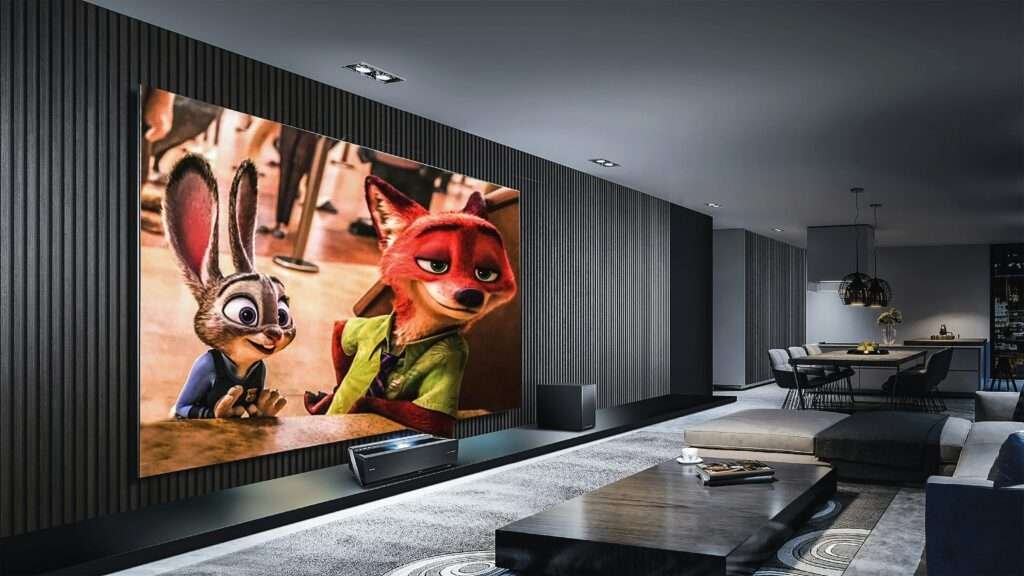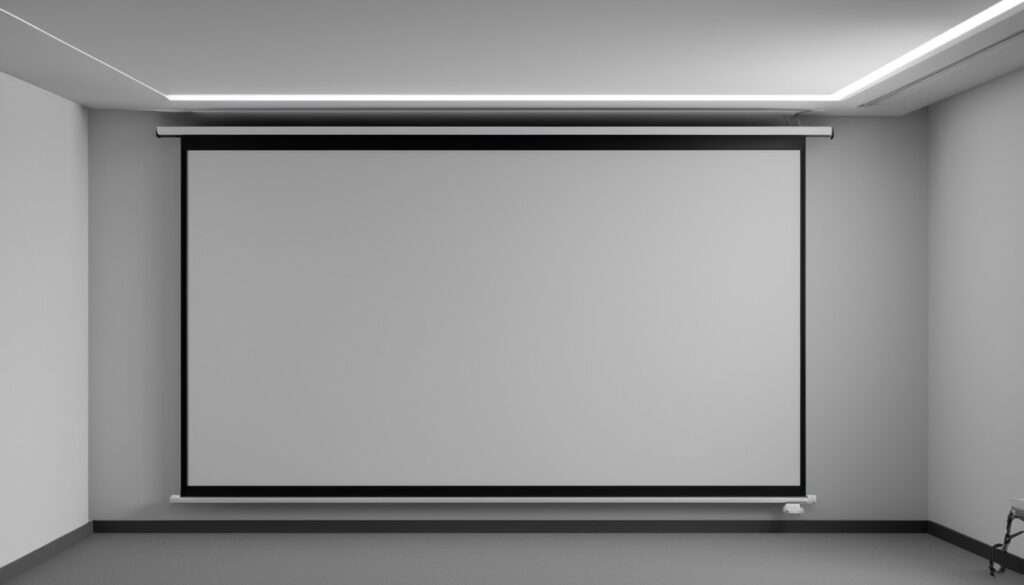In-Ceiling Projector Screen
In today’s era of home entertainment, mounting a projector screen on the ceiling can elevate your viewing experience to new heights. Whether you’re setting up a dedicated home theater or transforming a multipurpose room into a cinema paradise, mastering the art of ceiling-mounted projector screens is essential. In this comprehensive guide, we’ll walk you through the step-by-step process of mounting a projector screen on the ceiling, covering everything from preparation to installation tips. Let’s dive in!
Understanding the Benefits of In Ceiling-Mounted Projector Screens
Ceiling-mounted projector screens offer several advantages over traditional wall-mounted or freestanding options:
- Space Optimization: By mounting the screen on the ceiling, you can free up valuable floor space, creating a cleaner and more streamlined look for your entertainment area.
- Optimal Viewing Angle: Ceiling-mounted screens provide an optimal viewing angle, ensuring that every seat in the room has a clear view of the screen without obstructions.
- Enhanced Aesthetics: Ceiling-mounted screens offer a sleek and professional look, seamlessly integrating into the room’s decor and enhancing the overall ambiance.
- Versatility: Ceiling-mounted screens are versatile and can be easily retracted when not in use, allowing you to maximize the functionality of your space for various activities.
Step-by-Step Guide to Mounting a Projector Screen on the Ceiling
- Preparation: Start by selecting the ideal location for your projector screen, taking into account factors such as room layout, viewing distance, and ceiling height. Use a stud finder to locate ceiling joists or beams for secure mounting.
- Assembly: Assemble the necessary tools and equipment, including a ceiling mount kit compatible with your projector screen model. Follow the manufacturer’s instructions for assembling the ceiling mount components.
- Installation In-Ceiling Projector Screen: Carefully measure and mark the mounting location on the ceiling, ensuring proper alignment and spacing. Use a drill to create pilot holes for the mounting brackets, then secure the brackets to the ceiling joists using appropriate screws.
- Mounting the Screen: With the help of a second person, lift the projector screen onto the mounted brackets and secure it in place according to the manufacturer’s instructions. Ensure that the screen is level and properly aligned for optimal viewing.
- Testing and Calibration: Test the functionality of the projector screen, including retracting and extending mechanisms, to ensure smooth operation. Calibrate the screen position and angle as needed to achieve the best viewing experience.
- Finishing Touches: Conceal any visible cables or wires using cable management solutions for a clean and polished look. Double-check the stability and security of the mounted screen to prevent accidents or damage.
Conclusion 🙂
In-Ceiling Projector screen:Mounting a projector screen on the ceiling is a rewarding project that can significantly enhance your home entertainment setup. By following the steps outlined in this guide and utilizing the right tools and techniques, you can achieve a professional-looking installation that transforms your space into a cinematic oasis. With the versatility, aesthetics, and optimized viewing experience offered by ceiling-mounted projector screens, you’ll be well on your way to enjoying immersive movie nights and gaming sessions in the comfort of your own home.
Amazon Click for Latest Price
FAQs About In-Ceiling Projector screen
Q1: Can I mount a In-Ceiling Projector screen projector screen on a suspended or drop ceiling?
A: Yes, it’s possible to mount a projector screen on a suspended or drop ceiling using specialized mounting hardware designed for this purpose. Be sure to follow the manufacturer’s recommendations and consult a professional if needed.
Q2: What tools and equipment do I need for In-Ceiling Projector screen installation?
A: You’ll need basic hand tools such as a drill, screwdriver, stud finder, and measuring tape, as well as a ceiling mount kit compatible with your projector screen model.
Q3: How do I determine the ideal screen size and aspect ratio for my room?
A: Consider factors such as viewing distance, ceiling height, and seating arrangement when selecting the screen size and aspect ratio. Use online calculators or consult with a home theater specialist for personalized recommendations.
Q4: Can I install a In-Ceiling Projector Screen by myself, or do I need professional assistance?
A: While DIY installation is possible for those with basic handyman skills, professional assistance may be recommended for complex installations or larger screens to ensure safety and proper alignment.
You may like :)
Discover the Magic of Hidden Projector Screen Ceiling Mounts: A Comprehensive Guide to Enhancing Your Viewing Experience with ProjectorBuzz

